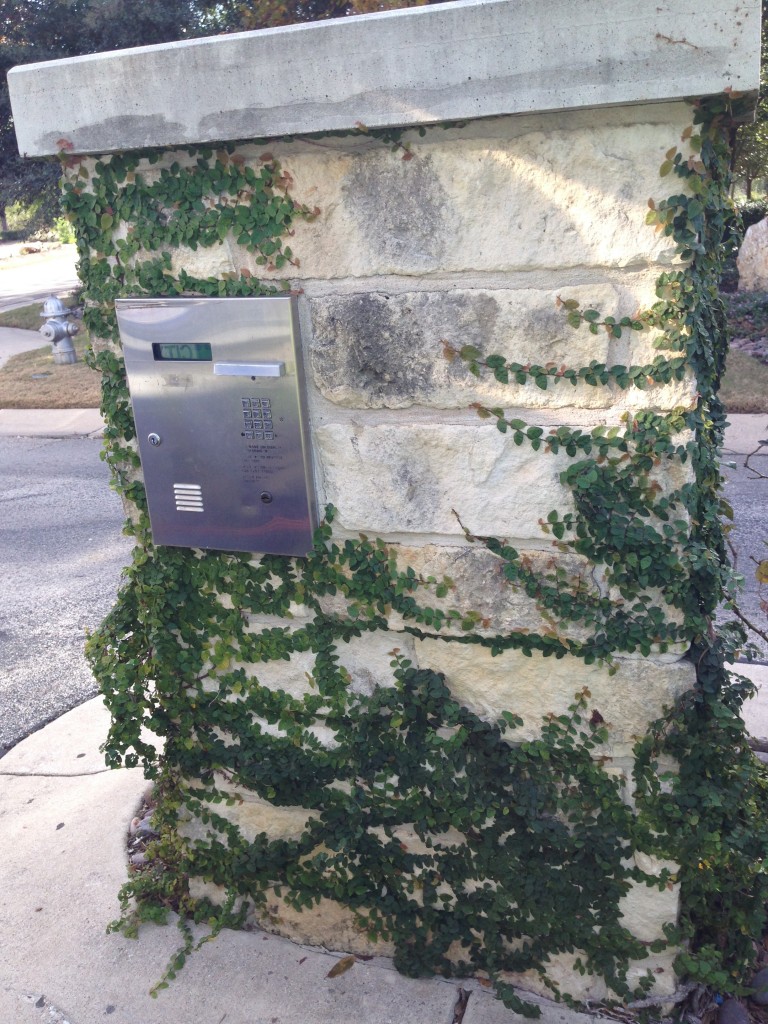By: Elvia Valle
More consistent with my post from last month, I have continued to scour the Austin area for sustainable gardens that can serve as the inspiration for mine. During the workshop I took for my semester project, I learned more about Texas’ native wild plants. I must admit that I greatly appreciate their beauty and emphasize my amazement with nature. It is no coincidence that the native plants around here require less water. More enjoyable still, is the by-product of sustainability in adopting a few of these plants to adorn your environment.
“Our ability to perceive quality in nature begins, as in art, with the pretty. It expands through successive stages of the beautiful to values as yet uncultured by language. The quality of cranes lies, I think, in this higher gamut, as yet beyond the reach of words.” – Aldo Leopold
In my previous blog posts, I shared photos of tree trunks. In this month’s post, I am breaking this pattern in sharing this photo of a beautiful tree that really reminds us that it’s November. Along with the weather, it serves as a reminder that the end of the year in near, and that soon, this tree will lose its leaves only to become new again.
“The Lord giveth, and the Lord taketh away, but He is no longer the only one to do so. When some remote ancestor of ours invented the shovel, he became a giver: he could plant a tree. And when the axe was invented, he became a taker: he could chop it down. Whoever owns land has thus assumed, whether he knows it or not, the divine functions of creating and destroying plants.” – Aldo Leopold
In spending some time outside of the United States, this native Texan realized that the seasons are a bit off here in central Texas. Cooler temperatures do not reach this area until mid-November, and this is also when I noticed that the color of the leaves on the trees had begun to change. Now, rather than the straw-colored leaves that covered the ground and leaves in my September post, the leaves on the tree in the picture below not only depict a beautiful golden hue, but also nature’s miracle, as like us humans, it too goes through changes.
“In short, a land ethic changes the role of Homo sapiens from conqueror of the land-community to plain member and citizen of it. It implies for his fellow-members, and also respect for the community as such.”
I end my posts by sharing a beautiful picture of fig vine growing on an outside wall that contains the call box to an apartment complex. In the workshop I attended for my class project, I learned that Fig vine attaches to walls and grows very aggressively. It is not recommended for wooden structures and should not be planted near preserves. Positively however, it is free of insects and diseases. When pruned to direct and control growth, it can serve as a beautiful integration of nature into our modern artificial edifices. Armed with such knowledge, we can further adorn some of our infrastructure to be in better harmony with nature.
“The evolution of a land ethic is an intellectual as well as emotional process. Conservation is paved with good intentions which prove to be futile, or even dangerous, because they are devoid of critical land use. I think it is a truism that as the ethical frontier advances from the individual to the community, its intellectual content increases.” – Aldo Leopold




